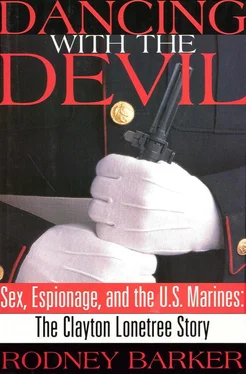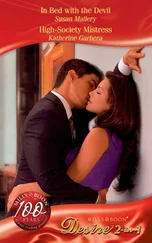As for the legality of the “hooded witness,” the CMR ruled that “mindful of the dangers inherent in ongoing undercover work in a foreign country,” and recognizing “a compelling government interest to protect the identity of the undercover agent and the intelligence resources and methodologies used by that agent which could lead to his exposure,” the military judge had not erred in setting limits on the defense team’s right to cross-examine John Doe. Going one step further, it said that John Doe was only a “corroboration witness,” and after conducting its own review of John Doe’s background as contained in a top-secret affidavit, the court said it would not have been “a fertile area for cross-examination” and “would not have negated the guilt of the appellant which was overwhelmingly proven at trial.”
In the argument Calligaro made for “ineffective assistance of counsel,” he argued that the schism between the civilian counsel and the military defense lawyers went beyond a difference of opinion as to trial tactics and strategy, whether a pretrial agreement should be negotiated, and what was an acceptable amount of confinement. Calligaro asserted that Stuhff and Kunstler not only failed to adequately explore the possibilities of a pretrial agreement, negotiate with the government in good faith, and present a potential agreement to Lonetree for his consideration, they deliberately sabotaged his relationship with Major Henderson by maligning his motives and loyalties, and oversold to Lonetree the idea that the outcome of a court-martial would be favorable to him.
The Court of Military Review rejected the argument, but in a revealing footnote to its decision conceded that part of its consideration was the “unfortunate effect it may have in future cases.” In short, the CMR did not want to set a precedent that would allow for a situation where the government could prosecute a perfectly good case, only to have it reversed on appeal because of a defense counsel’s incompetence.
The U.S. Court of Military Appeals (COMA) was the court of last resort in the military justice system. It was a five-judge court, and the judges were all people with civilian rather than military backgrounds. So that they would bring a completely civilian perspective to the review process, they were not even permitted to be retired military officers.
As it turned out, that didn’t make any difference when it came to COMA’s evaluation of most of the defense’s arguments. They upheld the decisions of the CMR in every instance—save one. They concluded that Stuhff and Kunstler’s failure to seek a plea agreement potentially deprived their client of his constitutional right to competent counsel.
In a majority ruling the COMA judges wrote, “Lonetree offers us colorable claims… that civilian counsel offered him bizarre and untenable advice, consistently attempting to instill in him a distrust of his military counsel and consistently inducing him away from a plea bargain assuring him substantial leniency in the face of overwhelming evidence of his guilt.” They recommended one of two remedies: a hearing by a lower court to determine if civilian counsel’s level of advocacy fell “measurably below the performance ordinarily expected of fallible lawyers,” or a rehearing on the sentence to determine if Lonetree had been punished more severely than he deserved because of the conduct of William Kunstler and Michael Stuhff.
The language of the appeals-court decision was remarkable for its colorful bluntness. Courts rarely embarrass lawyers with the use of words such as “bizarre.” Asked by the New York Times to comment, William Kunstler said that as a matter of principle he would not dispute the claims of ineffective counsel. “If they can win their case by proving any dereliction on my part, it would be all for the good and I cheer them on.” Mike Stuhff was less charitable. In a letter he fired off to Lee Calligaro, he branded the complaint against his representation of Lonetree as a “cynical, dishonest and harebrained scheme” and demanded “you retract all the allegations of your brief.”
That didn’t happen. Instead, a rehearing on sentencing was held at Quantico on October 29, 1993, to consider whether Lonetree had been misled by his civilian lawyers, resulting in an excessive sentence. If such a determination was made, he was to be immediately resentenced.
Although the hearing was held in the same building and the very courtroom where the court-martial took place more than six years earlier, this proceeding bore little relation to what went on before. It was conducted before a military judge, Lt. Col. David Anderson, not a jury. There were no armed guards patrolling the grounds and no passes required for admission, removing the impression national security was at stake. In place of a media horde a mere three reporters showed up to cover the event, along with Lonetree’s parents. And in complete contrast to William Kunstler’s abrasive and combative style, Lee Calligaro epitomized reasonableness and sincerity.
“We are not here to decide questions of guilt or innocence; we are here to determine an adequate and sufficient sentence,” Calligaro announced in his opening remarks. And toward that end he had flown in two key witnesses to testify: Maj. David Henderson, who had since retired from the military and was now working for the U.S. Attorney’s Office, and Clayton Lonetree.
Lonetree went first. He had put on weight since his court-martial, his hair was longer, and the dark frame of his glasses lent a bookish aspect to his appearance. Entering Lejeune Hall, he had worn an E-1, or private’s, uniform, but for the hearing he was allowed to wear his sergeant’s uniform with the ribbons and stripes. After taking a seat on the witness stand, he was led through a highlighted recitation of the sequence of events that had resulted in his espionage activities in Moscow and Vienna. But while drawing out this information Calligaro tried his best to achieve a balance: He did not want to bring the offenses back to life too vividly, but he did want the court to see that Lonetree accepted full responsibility for his actions, was able to bring understanding to his “absence of judgment,” and was genuinely remorseful.
The second phase of Lonetree’s testimony left the distant past for the recent past, turning to the six and a half years he’d spent in the military barracks at Fort Leavenworth and the occupational skills he had developed in the print shop and woodshop during that time, the fact that he was pursuing his associate of arts degree, and the list of books he’d read by authors such as Stephen Crane, Herman Melville, and Jack London.
In his performance on the witness stand Clayton Lonetree continued to project the image of an introverted and reserved person, taking a customary moment to reflect on the questions before answering in a soft-spoken voice. And yet, clearly, he was a different person. The impression he made was that the enormity of his court-martial and sentence had hit him in a way that forced him to realize this was as low as it goes; and his intelligence was such that, finding himself in a situation where he could do one of two things—grow and mature, or despair—he appeared to have chosen the former, utilizing the enormous amount of time he had for introspection, and taking advantage of the opportunities around him. His records from Fort Leavenworth and the evaluations of the staff psychologist supported that notion. Calligaro read just a few excerpts, the ones that described Lonetree as a “model inmate,” someone in whom there was “surprisingly no bitterness or blaming of others or blaming the system,” someone “with a great degree of insight into how he was manipulated,” someone with “no orientation to the continuance of such behavior,” who had been “successfully rehabilitated and serves no current risk for future acts against the United States Government or other criminal behavior.”
Читать дальше












